SLOWING DOWN WITH NATURAL DYES
Slow living is a term that has increased in popularity over the past few years and since Covid people have started to realise there is some real meaning in these two words when put together. The pandemic has given us all the opportunity to reassess how we want to live, making us more conscious and mindful. Let's face it, that can only be a good thing. We are now all looking for more connection in what we do and for me, that's where natural dying comes in.
First off what are Natural Dyes?
By definition, they are colourants derived from plants and minerals. Working with natural dyes is a very intentional and slow process that dates back to the neolithic period. It's a process that was replaced and sadly forgotten in the modern world for convenience in the 1800s after the creation of synthetic dyes.
Every part of the process takes time. First you source and prepare dye material, then you go on to treat your fabric so it holds on to that precious dye, then you can make your dye vat and soak your material. Then when you think the end is in sight, you have to summon up more patience to cure the fabric so the dye has the best opportunity to grab on to those fibres resulting in a lasting colour. What's slower and more connected than that?!
I specifically like to work with fresh plants and kitchen by-products that directly relate to my environment. I love being able to walk out my door and discover the rainbow of colour that the surrounding nature provides. It definitely gives new meaning to a leisurely stroll. Every walk is quickly turned into an opportunity to forage, so inevitably I come home with a bouquet of bracken and nettles, a bundle of bark and a bag full of berries. A tip I’ve learnt whilst looking to discover new dye plants is to give them a good sniff (only if you’re sure they’re not poisonous of course). Plants with a fragrance indicate the presence of aromatic oils and acids which are a sign of dye potential. Discovering a new dye plant is awesome and playing with its colour spectrum is what keeps the process exciting.
My process is always experimental, I have no desire to closely replicate colours again and again. For me, it's a journey of discovery and surprise that provides a close connection to nature. Kitchen by-products are also a brilliant resource that can be tapped into and provide the perfect gateway to discovering the world of natural dyes. Everyone has old tea bags, coffee grounds, onion skins, avocado stones (did you know they make pink?! Oh and red cabbage makes blue?!). There's loads of other dye materials at your fingertips every day, it's awesome to turn waste into value! The beauty is: there’s no right and wrong when working with something so natural. It's all an experiment to create something with character. Natural dyes are living, they change over time, and they react to their environment. Pretty cool right?
However, there is one necessity to be a successful natural dyer. You need a basic understanding of fabric. Natural dyes take you back to natural fibres which are divided into two categories: cellulose and protein. Cellulose fabrics are those made from plants such as cotton, linen and bamboo. Protein fabrics are those which are sourced from animals such as wool and silk. We all make decisions about textiles every day: decisions about the clothes we wear to the soft furnishings in our homes. Often the choices we make come down to our individual ethics.
Natural dying is a big step away from not only synthetics but also a fast paced life: giving us something mindful, natural, long-lasting and SLOW.
Why not follow Ellen on Instagram- @altdrifts and visit her Etsy shop to check out some of her naturally dyed items, and macrame.




